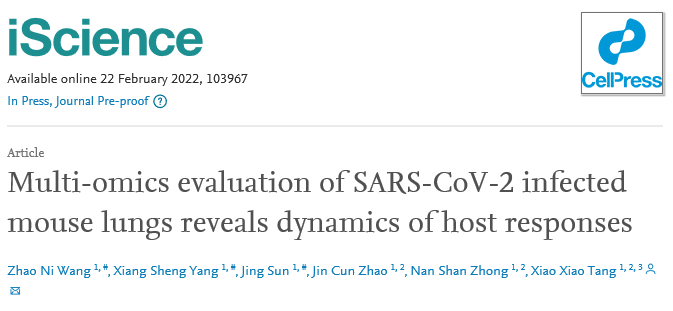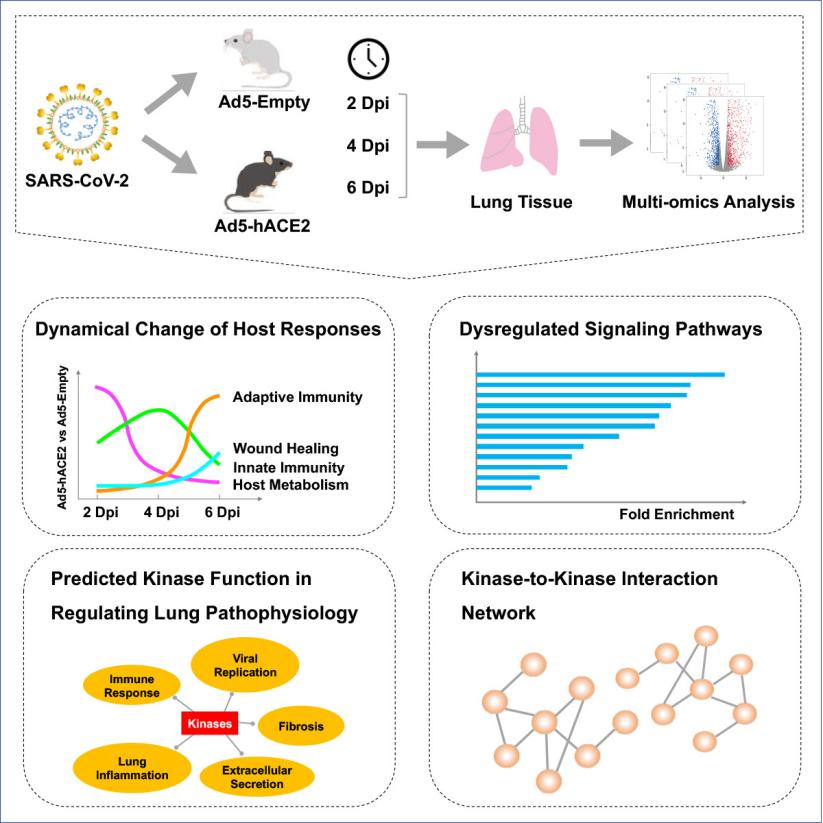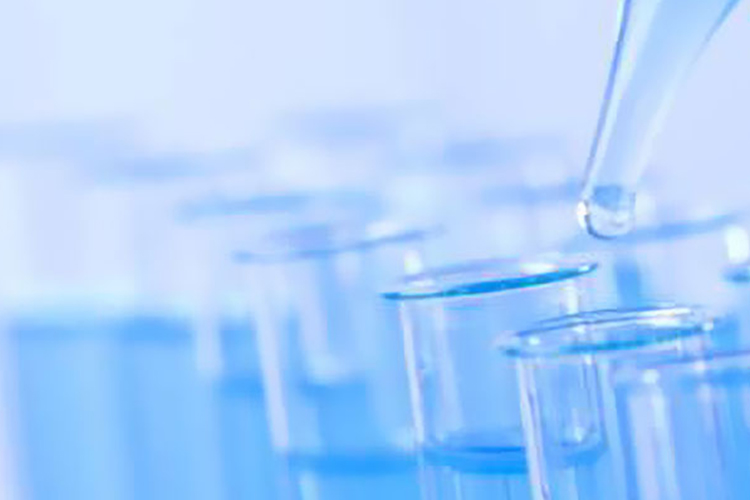Professor Tang Xiaoxiao’s team analyzes the dynamic host response and regulation mechanisms after novel coronavirus infection
2022-02-04734Recently, the team led by Professor Tang Xiaoxiao has published a research paper titled “Multi-omics evaluation of SARS-CoV-2 infected mouse lungs reveals dynamics of host responses” online on the journal iScience, a journal of Cell Publishing Group. This study is the first one to analyze the dynamic host response and pathological mechanisms of mice after novel coronavirus infection.

The outbreak caused by the highly contagious novel coronavirus, SARS-CoV-2, has caused catastrophic impact on global health and economy. Lung is the main target organ of novel coronavirus, and the autopsy results show that novel coronavirus infection can cause a variety of pathological changes to the lungs, among which the mucus hypersecretion and pulmonary fibrosis are closely related to the worsened conditions and deaths of infected victims. Therefore, clarifying the mechanisms of respiratory mucus secretion and abnormal function of damage repair caused by SARS-CoV-2 and on this basis exploring the potential key intervention, therapeutic targets and strategies is of extremely important significance in reducing clinical COVID-19 patients with conditions such as small airway mucus obstruction and pulmonary fibrosis, and reducing its development to severe and critical conditions, and reducing the mortality of patients. However, how does the body’s host response change dynamically after novel coronavirus infection? What is the mechanism behind the regulation of multiple pathophysiological changes?
At present, although there are some omics studies on tissues after the death of COVID-19 patients, there will be significant changes in post-mortem tissues such as degradation, which cannot truly reflect the situation of SARS-CoV-2 infection in vivo, and material can only be taken at the end of the disease, which lacks the tracking of the dynamic changes of the host response after infection. In order to reflect the host response and pathological change mechanism after SARS-CoV-2 infection at the living body level, we jointly analyzed the transcriptome and proteome of mouse lung tissues under different stages after SARS-CoV-2 infection, and studied the dynamic regulatory mechanisms of lung host response and pathological changes (focusing on lung fibrosis and respiratory mucus secretion), and deeply explored the relevant signaling pathways. We revealed that host responses such as metabolism, immunity and tissue damage repair change dynamically with the viral infection process. In addition, we screened out the significantly activated kinases at each stage of infection, and analyzed their regulation of host responses based on their own functions (graphical abstract). In this study, we found reciprocal regulation between the CDK family and MAPK pathway, which were involved in the regulation of multiple host responses, providing potential targets for pharmacological intervention and treatment of COVID-19.

Graphical abstract of this study
The COVID-19 caused by SARS-CoV-2 still continues and spreads around the world, and deeply exploring the pathogenesis of COVID-19 is of great significance for the prevention, control and treatment of diseases. By revealing abnormal molecules and pathways at different stages after infection, linking dysregulated molecules / pathways with pathological changes in the corresponding time periods, we can not only better understand the pathogenesis of COVID-19, but also further identify potential key therapeutic targets.
















